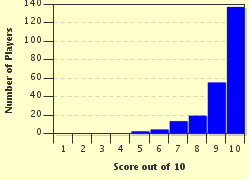Quiz Answer Key and Fun Facts
1. Before there was a United States of America, there were colonies owned by Great Britain. How many of these colonies formed the USA following the American Revolution?
2. In 1765, the British Parliament passed a law called the Stamp Act, which required the American colonists to pay a tax on newspapers, magazines, playing cards and legal documents. Why did many people in the American colonies resent having to pay taxes to Great Britain?
3. Parliament soon repealed the Stamp Act, but replaced it with taxes on other products. In 1773, they passed a tax on tea that was especially unpopular. This resulted in a famous act of protest by the colonists in Boston. What was this protest called?
4. Americans began to form armed groups called militias. Because these men could be ready to fight very quickly, they acquired a special nickname. What was it?
5. In 1775, the British decided to seize a supply of gunpowder the colonists had stored at Concord, Massachusetts. But some people in Boston found out about the British plan, and one of them rode along the road to Concord, supposedly shouting "The British are coming! The British are coming!" in order to warn the militia. What was his name?
6. Thomas Jefferson wrote a famous document that gave the reasons why the colonies wanted to form their own country, and most of the delegates at the Second Continental Congress signed it. What was this document called?
7. In order to achieve independence, the colonies knew they would have to form an army. Who did they choose to be its leader?
8. In December 1777 the American army make camp in a place that is still remembered in history, because over 2500 men of this small army died of hunger or exposure. What was this place called?
9. Although the American army had many problems, its small navy managed to achieve many victories at sea. When one of its leaders was asked if he wanted to surrender, he replied, "I have not yet begun to fight!" Who was this most famous American naval figure of the Revolutionary War?
10. In 1781, with the help of the French navy, the Americans managed to isolate a large British army under General Cornwallis and force it to surrender. What was the name of this battle, which was the last major engagement of the Revolutionary War, and the one which made independence possible?
Source: Author
daver852
This quiz was reviewed by FunTrivia editor
NatalieW before going online.
Any errors found in FunTrivia content are routinely corrected through our feedback system.

